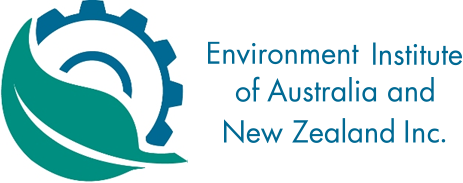-
Member Login
- Home
- About
- Institute Groups
- Australian Divisions
- New Zealand Chapter
- Special Interest Sections
- Communities of Practice
- Membership
- Events
- News & Publications
- Institute Programs
- Resources
- Jobs Board
- Contact Us
- Site Info
Strategic Environmental Assessment Community of Practice
Strategic Environmental Assessment Community of Practice
The Strategic Environmental Assessment (SEA) Community of Practice is part of the EIANZ Impact Assessment Special Interest Section.
The SEA Community of Practice seeks to:
- share knowledge and experience of strategic approaches/SEA in the Australian/ New Zealand context
- build a basic understanding of strategic approaches and SEA as terms and concepts with good practice examples
- identify potential champions for strategic approaches in government and the private sector
- highlight where there may be upcoming opportunities for a more strategic approach in planning, impact assessment and/or decision-making
- establish a ‘community of practice’ for strategic approaches to impact assessment.
Resources
Strategic Environmental Assessment – Information flyer and case studies
Strategic Environmental Assessment (SEA) can be a powerful holistic and participatory approach to the evaluation of cumulative environmental impacts and provision of conservation outcomes.
The SEA Community of Practice has developed an information flyer and case studies outlining the importance of SEA and its significant advantages over traditional project/site based Environmental Impact Assessments (EIAs).
Regional planning and the mitigation hierarchy: A guide (2025)
The SEA CoP's guide demonstrates how each component of regional planning can contribute to the effective application of the mitigation hierarchy at the project level, and how the overall regional planning process, when undertaken effectively, will itself implement the mitigation hierarchy at a regional scale.
IAIA19 Lessons learned from SEAs in Australia - Combined presentations
This interactive panel session at the Brisbane IAIA19, chaired by Carolyn Cameron, presented emergent ‘big-picture’ lessons gleaned from a decade of SEA practice in Australia, illustrated with case studies.
- SEA using landscape as a driving concept – Garry Middle
- What difference does SEA make anyway? – Tanya Burdett
- Strategic Environmental Assessment: a regulator’s perspective – Bruce Edwards
- Implementing SEA: lesson learned – Peter Hemphill
SEA: Lessons Learned from Australia?
EIANZ 18 - Reimagine an alternative landscape scale approach to national environmental law: Extract from Notes from SEA Session
- Extract from notes from SEA session at EIANZ conference in Sydney 2018
- Panel session: Lachlan Wilkinson, Chair: Carolyn Cameron, Tessa Lavers, Paul Elton, NSW Biodiversity Conservation Trust, Nick Taylor Clayton Utz and James Trieze, ACF
International SEA Workshop, 2019, Gold Coast
Building on IAIA19 in Brisbane, the SEA Community of Practice brought together 25 practitioners, regulators and academics from across Australia with visiting international experts Thomas Fischer from the UK, Maria Partidario from Portugal and Amanda Chisholm from Scotland
The one day Gold Coast workshop was underwritten by EIANZ’s New Initiative Fund. Seed funding for this workshop was provided by EIANZ’s New Initiative Fund.
The proceedings provide international insights along with applications in the Australian context.
Getting Strategic with Impact Assessment, April 2020 - Webinar Slides
Slides extracted from the SEA Community of Practice's submission on the EPBC Act Review; part of EIANZ EPBC Act Review webinar series; presented by Carolyn Cameron.
EPBC Act Review Chapter 3b; SEA Community of Practice submission - April, 2020
The SEA Community of Practice made recommendations about 6 topics for consideration in the review of the EPBC ACT:
- [Bio]regional Planning
- Strengthening Strategic Assessments
- Assessing and Managing Cumulative Impacts
- Matters of National Environmental Significance
- Standards for Assessment
- Implementation Issues
EIANZ EPBC Act Review - SEA Section
The SEA Good Practice Guidance | 2018
The SEA Good Practice Guidance compiles information developed by the SEA Community of Practice from 2016-2018. Compiled by an ANU final year student intern, it importantly recognises there are two types of SEA used in Australia, a planning SEA and an assessment SEA. Good practice principles and the steps in SEA are described and applied to a case study for a framework SEA for pumped hydro.
Just how ‘strategic’ are Strategic Environmental Assessments? | Mitchell Ross, JCU | 2019
This study involved an extensive literature review focussing on strategic thinking in SEA and the subsequent development of a unique set of criteria to assess the strategic nature of Australian Strategic Assessments completed under the Environment Protection and Biodiversity Conservation Act (1999).
The study found that the Australian system is not always truly strategic. Incorporation of sustainability aspects and adaptiveness were strengths of the Australian system in most instances, while components such as cumulative impact assessment and assessment of alternatives were often absent or insufficiently addressed. To make SAs more strategic would require enhancing existing legislation and endorsement criteria with more explicit guidance on developing strategically focused SEA
We acknowledge and value the rights and interests of Indigenous Peoples in the protection and management of environmental values through their involvement in decisions and processes, and the application of traditional Indigenous knowledge.

